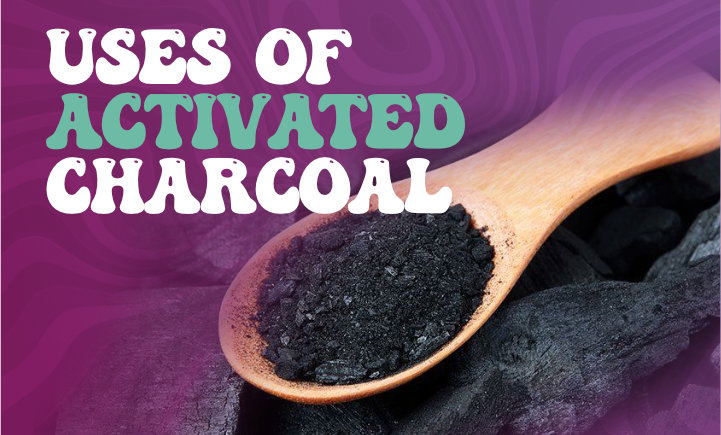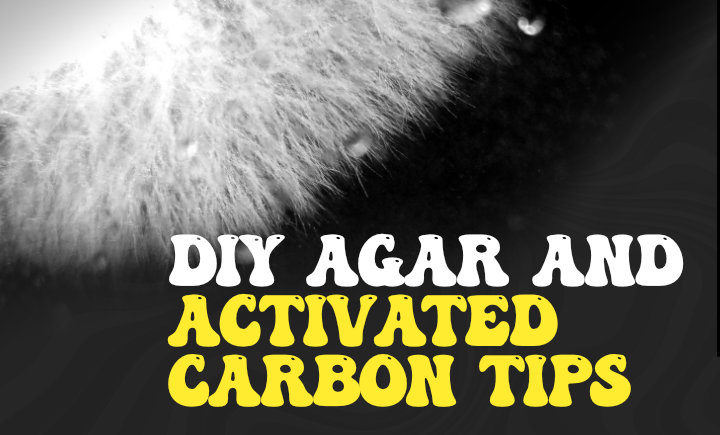Perfecting Black Agar: A Simple How-To Guide
- City Guide
- Magic Mushrooms
-
Jul 26
- Share post

Are you a mushroom enthusiast looking to take your cultivation skills to the next level? Then you’ve come to the right place! Here, we will delve into the fascinating world of perfecting the black agar recipe for mushroom cultivation.
Black agar is a specialized medium that provides optimal conditions for growing mushrooms and has gained popularity among cultivators due to its unique properties.
To understand what black agar is, we must first understand activated charcoal. Activated charcoal is a highly porous material that has been treated to increase its surface area, making it highly effective in absorbing impurities and toxins from the environment. When incorporated into an agar recipe, activated charcoal helps create a dark black color that stimulates mycelial growth in mushrooms. This results in faster colonization rates and healthier fruiting bodies.
What is Black Agar?
Black agar is a highly beneficial substance for mushroom cultivation. Its dark color helps to enhance the visibility of mushroom mycelium, making it easier to monitor growth and identify potential issues. Additionally, black agar contains nutrients that promote the development and vitality of mushroom cultures, leading to faster and healthier growth.
Overall, incorporating black agar into the cultivation process can greatly improve your success rate and yield.
Benefits of Black Agar
The advantages of using black agar in mushroom cultivation are numerous and can greatly enhance your growing experience. Black agar provides several benefits that make it an ideal medium for cultivating mushrooms:
Enhanced mycelium growth: Black agar contains specific nutrients and additives that promote rapid mycelium colonization. This results in faster substrate colonization and ultimately leads to quicker mushroom fruiting.
Increased yield: The unique composition of black agar encourages robust mushroom development, resulting in higher yields than other agar recipes. The nutrient-rich medium ensures optimal nutrition for the growing mushrooms, leading to larger and healthier fruit bodies.
Reduction of contamination risks: Black agar is known for its antimicrobial properties, which help prevent the growth of contaminants such as bacteria and molds. This reduces the risk of contamination during the cultivation process and increases the success rate of your mushroom projects.
Simplified isolation procedures: Using black agar simplifies the process of isolating desired strains or genotypes from a mixed culture. The distinctive coloration makes it easier to visually identify individual mycelial colonies, facilitating efficient selection and isolation of superior strains for further propagation.
What is Activated Charcoal?
Activated charcoal is produced by heating carbon-rich materials like wood or coconut shells at high temperatures. The resulting product is then treated with chemicals to create a highly porous material with a large surface area.
Once made, activated charcoal has various uses. It can filter impurities in water and air, treat poisonings and overdoses, and even whiten teeth in some dental procedures.
How to Make Activated Charcoal?
First, gather the necessary materials and follow these simple steps to make activated charcoal for mushroom cultivation.
To begin, you’ll need raw materials such as hardwood or coconut shells. The first step is to burn the raw material in a low-oxygen environment, which can be achieved by using a kiln or an improvised setup like a metal drum with holes for airflow. This process is called pyrolysis, and it converts the raw material into char.
Once you have obtained the char, it needs to be activated to increase its absorption capacity. Activation can be done through either chemical or physical methods. One common method is to treat the char with steam at high temperatures, typically around 900-1000 degrees celsius. The steam reacts with the carbon in the char, creating micro-pores and increasing its surface area.
After activation, it’s important to cool down the activated charcoal slowly to prevent it from losing its effectiveness. Once cooled, grind the charcoal into a fine powder using a mortar and pestle or a grinder. Store it in an airtight container until ready for use in your mushroom cultivation project.
Uses of Activated Charcoal
Activated charcoal is commonly used in agar recipes to improve media quality and promote mycelial growth. By adding activated charcoal to the recipe, we can enhance the ability of mushrooms to absorb nutrients and develop robust mycelium. This results in higher yields and healthier fruiting bodies.
Here are a few recipes that incorporate activated charcoal:
- Activated charcoal air filter: Create a simple air filter for your mushroom growing area by placing activated charcoal in a mesh bag or container with holes. Hang the bag or container in the grow room to help absorb odors and contaminants in the air.
- Activated charcoal substrate additive: Add a small amount of activated charcoal powder to your mushroom substrate mix. This can help absorb toxins and impurities, creating a healthier environment for mushroom growth.
- Activated charcoal casing layer: Mix the activated charcoal powder with your casing layer material (such as peat moss or vermiculite) to create a charcoal-enriched casing layer. This can help prevent contamination and promote healthy mushroom growth.
- Activated charcoal water filter: Use activated charcoal to filter the water you use for mushroom cultivation. This can help remove chlorine and other impurities that may hinder mushroom growth.
- Activated charcoal glove box: To create a sterile workspace for mushroom cultivation, line the inside of a glove box with activated charcoal. This can help absorb airborne contaminants and maintain a clean environment for handling mushroom cultures.
Remember to always use food-grade activated charcoal, free from any additives or chemicals, for mushroom cultivation purposes.
The Art of Making Black Agar
In making black agar, there are two key points to consider: the ingredients and the process.
The ingredients include activated charcoal, agar powder, and nutrient sources such as potato dextrose broth.
The process involves carefully measuring and mixing these ingredients, sterilizing the mixture, and pouring it into Petri dishes before allowing it to solidify.
The Ingredients
The ingredients for perfecting the black agar recipe are essential for successful mushroom cultivation. It’s crucial to use a high-quality agar powder as the base ingredient. Agar is a gelatinous substance derived from seaweed and acts as a solidifying agent in the growth medium. It provides a stable structure for the mycelium to expand and thrive upon.
The Process
By combining high-quality ingredients and following a simple process, you can easily produce a luscious black agar medium that facilitates optimal growth of mycelium cultures. To create this black agar recipe, you will need the following ingredients:
– 20g agar agar powder
– 10g malt extract
– 5g peptone
– 5g yeast extract
– 1L distilled water
– Activated charcoal (for coloring)
Equipment:
– Pressure cooker (able to reach and maintain 15 PSI)
– Glass jars or petri dishes with lids
– Pressure gauge
Instructions:
- Begin by sterilizing the glass jars or Petri dishes and their lids by boiling them or running them through a dishwasher cycle.
- In a large pot, combine agar agar powder, malt extract, peptone, and yeast extract.
- Add distilled water to the pot and mix well until all ingredients are dissolved.
- Sprinkle the activated charcoal into the mixture to achieve the desired black color. The amount of charcoal used depends on personal preference.
- Place the pot on the stove and heat the mixture while stirring continuously until it reaches a gentle boil. Once the mixture boils, cover the pot with a lid and let it simmer for an additional 5 minutes to ensure complete sterilization.
- While the mixture is simmering, prepare the pressure cooker. Add water to the pressure cooker according to the instructions and insert the pressure gauge.
- Transfer the mixture into the sterilized glass jars or Petri dishes while still hot, leaving some headspace, then seal the jars or dishes with their lids tightly.
- Place the sealed jars or dishes into the pressure cooker and close it securely.
- Heat the pressure cooker over high heat until it reaches and maintains a pressure of 15 PSI. Cook the mixture at 15 PSI for approximately 20-30 minutes to thoroughly sterilize the agar.
- After the cooking time, turn off the heat and allow the pressure cooker to depressurize naturally. Do not force depressurization. Once depressurized, carefully remove the jars or dishes from the pressure cooker and let them cool at room temperature. Once cooled, the black agar is ready for mushroom cultivation.
What to Mix with Activated Charcoal for Black Agar?
Mixing activated charcoal with other ingredients is key to perfecting your black agar recipe. Activated charcoal alone may not provide all the necessary nutrients and components required for optimal mushroom growth. Therefore, you need to combine it with other substances to create a balanced and nutritious medium.
One common ingredient to mix with activated charcoal is agar-agar powder, which acts as a solidifying agent and provides a stable structure for the mycelium to grow on. Additionally, we can add various nutrient sources such as malt extract, yeast extract, or potato dextrose to enhance the growth and development of the mushrooms. These ingredients supply essential vitamins, minerals, and carbohydrates that promote mycelial growth and fruiting body formation.
DIY Agar and Activated Carbon Tips
To achieve the perfect black agar recipe, it’s essential to incorporate DIY techniques and utilize activated carbon effectively.
DIY agar can be made by combining ingredients such as agar powder, malt extract, yeast extract, and peptone. These components provide the necessary nutrients for mushroom growth while maintaining a sterile environment. By preparing your own agar, you have greater control over its quality and can tailor it to suit the specific needs of your mushrooms.
When it comes to incorporating activated carbon into black agar, there are a few tips that can help you achieve optimal results. Firstly, it is crucial to ensure that the activated carbon used is finely ground to maximize its surface area and absorption potential. This allows for better removal of contaminants from the medium. Secondly, we should add the activated carbon during the cooling phase of agar preparation. This ensures that it is evenly distributed throughout the medium and improves its overall effectiveness.
To further enhance the efficiency of activated carbon in black agar, consider using a higher concentration in the recipe. Increasing the amount of activated carbon can enhance its ability to adsorb impurities and toxins from the growing environment. However, it is important to strike a balance, as using excessive amounts may hinder mycelium growth or even inhibit mushroom formation altogether.
Lastly, proper sterilization techniques are vital in maximizing the benefits of DIY agar and activated carbon in mushroom cultivation. Ensuring all equipment and ingredients are properly sterilized before use helps prevent contamination that could compromise your efforts. Additionally, storing prepared black agar in sterile containers under appropriate conditions will maintain its efficacy over time.
Final Thoughts
Incorporating DIY techniques and utilizing activated carbon effectively creates an optimal medium for growing mushrooms with minimal contamination risks. DIY agar preparation gives you better control over the ingredients used, ensuring they’re high quality and free from any potential contaminants. By following a precise recipe and sterilization process, you can minimize the chances of introducing unwanted organisms into our agar.
By combining DIY techniques with the effective use of activated carbon filters, you can create an ideal medium for cultivating mushrooms while minimizing contamination risks. Precise measurements, thorough sterilization processes, and close attention to environmental factors are all key elements in perfecting black agar recipes. With dedication and careful execution of these practices, you can increase your chances of achieving successful harvests without compromising quality or yield.
By mastering the art of making black agar, mushroom cultivators can create an ideal environment for mycelium growth and achieve exceptional yields. The knowledge gained through experimentation, and experience will undoubtedly contribute to further advancements in this field. With continued research and innovation, we can expect even more refined techniques for producing black agar in the future.
In summary, perfecting the black agar recipe for mushroom cultivation requires technical proficiency and attention to detail. The use of activated charcoal is key in obtaining the desired black coloration. With proper understanding and application of these concepts, mushroom cultivators can enhance their success rate and push boundaries within this fascinating field.
Frequently Asked Questions
What is black agar?
Black agar is a type of agar medium that contains activated charcoal, which gives it a black color. It is used for the cultivation and identification of certain bacteria and fungi.
Why use charcoal agar?
Charcoal agar is used in microbiology for the selective isolation and identification of certain bacteria and fungi. The charcoal in the agar helps to absorb and neutralize inhibitory substances present in the samples.
Will mycelium grow on charcoal?
Mycelium can grow on charcoal as it provides a suitable substrate for fungal growth. The porous structure of charcoal allows for the penetration and colonization of fungal hyphae.
What is agar agar for fungi?
Agar agar for fungi is a type of agar medium specifically formulated for the cultivation and propagation of fungal species. It provides the necessary nutrients and physical support for fungal growth and is commonly used in laboratories for studying fungi.


